Henry who?: Barbara Hepworth retrospective ’Sculpture for a Modern World’ opens at Tate Britain
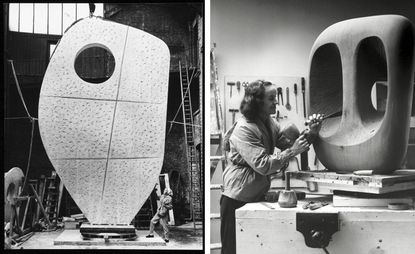
Barbara Hepworth always suffered from not being Henry Moore. Or, in fact, from not being any old Henry, John or Jacob. Sculpture being a man's business and all. Except, maybe it's not quite that simple. Certainly, Hepworth doesn't have the brand recognition that Moore does. But as a new retrospective at Tate Britain – her first for almost 50 years – makes clear, during the 1950s and 60s Hepworth was an artist of international standing in the way that Moore never really was. In 1950 she flew the flag at the Venice Biennale – and it's a Barbara Hepworth in Manhattan's UN Plaza, not a Henry Moore.
'Barbara Hepworth: Sculpture for a Modern World' is recognition that Hepworth's stock has been rising exponentially in recent years; that her abstracts now resonate more powerfully than Moore's looming figures and that her carvings in African hardwood have aged remarkably well. She certainly gets name-checked more than often than Moore these days, by designers if not artists. Hepworth is a true modernist icon in ways Moore is not.
It seems that Hepworth had planned that all along. One of the more fascinating elements of the show are her photographic collages, which first appeared in The Architectural Review in 1939, placing her works alongside modernist houses by the likes of Neutra. This now feels like a very smart move, positioning her work as part of the broader modernist project (and ensuring that she is now fetishised by the same people who fetishise Case Study Houses and Finn Juhl sofas). Indeed, the exhibition makes clear how much care and attention Hepworth – the toughest of cookies – paid to show her work was well represented in art magazines and beyond.
Another joy of the show is a room dedicated to the marvelous Gerrit Rietveld Pavilion at the Kröller-Müller Museum in Otterlo, Holland, which has housed a permanent installation of Hepworth's work since 1965. For this exhibition, Tate Britain worked with architect Jamie Fobert and students of the RCA to create a temporary take on the Pavilion, housing six works from the late 1950s and early 60s.

The retrospective displays over 100 artworks, including both her most significant sculptures in wood, stone and bronze, and lesser-known works.

With round and sensuous shapes carved directly into heavy materials, Hepworth created a form of raw serenity.
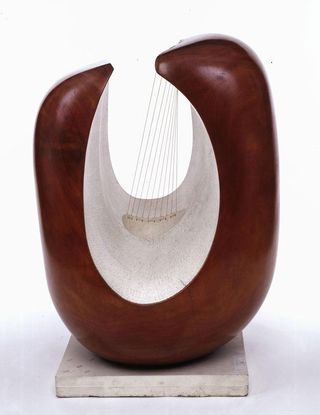
Powerfully evocative, Hepworth's sculptures nonetheless remain essential in form. Dove, for instance, adopts the shape of a modernist harp.

'Barbara Hepworth: Sculpture for a Modern World' is recognition that Hepworth's stock has been rising exponentially in recent years; that her abstracts now resonate more powerfully than Moore's looming figures and that her carvings in African hardwood have aged remarkably well.
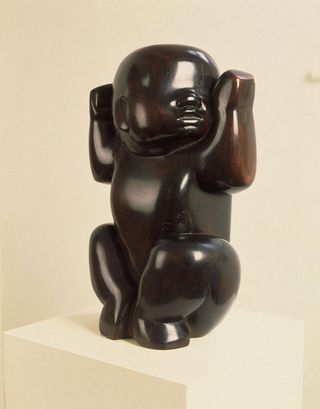
The show chronologically follows Hepworth's artistic footsteps, starting out with her smaller figurative sculptures from the 1920s and culminating with the larger abstract pieces of the 1950s and 60s.
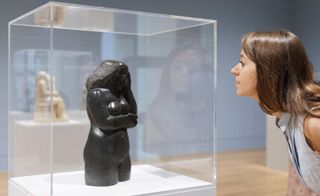
Hepworth's struggle as a woman to make it in the artistic world is an overarching theme throughout the show. Almost exclusively surrounded by men, Hepworth demonstrated a rigour in her work which seemed to exceed the desire to create and further suggested a motivation to break through.

The show contains contextual multimedia such as magazines and photographs to complement the artist's work, and demonstrate its critical reception over the years.
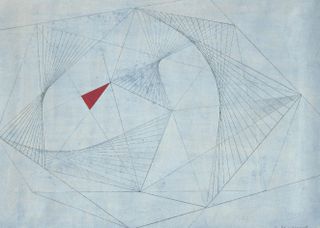
Sketches also surround the material manifestations of her work, so as to demonstrate her creative process.

Oval Form (Trezion) was made in 1961 – 63: the years in which she more consistently created large, abstract sculptures.
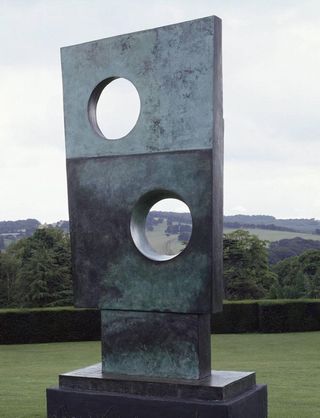
Hepworth's works were meant to exist outside as environmental installations. 'All my sculpture comes out of landscape,' she wrote in 1943.

Hepworth's retrospective at Tate Britain emphasises the importance and meaningful endurance of her works.
ADDRESS
Tate Britain
Millbank
London, SW1P 4RG
Wallpaper* Newsletter
Receive our daily digest of inspiration, escapism and design stories from around the world direct to your inbox
-
 Utilitarian men’s fashion that will elevate your everyday
Utilitarian men’s fashion that will elevate your everydayFrom Prada to Margaret Howell, utilitarian and workwear-inspired men’s fashion gets an upgrade for S/S 2024
By Jack Moss Published
-
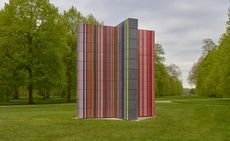 Gerhard Richter unveils new sculpture at Serpentine South
Gerhard Richter unveils new sculpture at Serpentine SouthGerhard Richter revisits themes of pattern and repetition in ‘Strip-Tower’ at London’s Serpentine South
By Hannah Silver Published
-
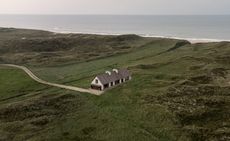 Vipp’s Scandinavian guesthouse offers a sleek setting amid a wild landscape
Vipp’s Scandinavian guesthouse offers a sleek setting amid a wild landscapeVipp Cold Hawaii is a Scandinavian guesthouse designed by architecture studio Hahn Lavsen in Denmark’s Thy National Park
By Sofia de la Cruz Published
-
 Gerhard Richter unveils new sculpture at Serpentine South
Gerhard Richter unveils new sculpture at Serpentine SouthGerhard Richter revisits themes of pattern and repetition in ‘Strip-Tower’ at London’s Serpentine South
By Hannah Silver Published
-
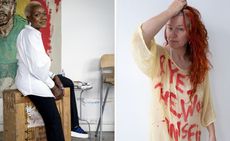 Meet the Turner Prize 2024 shortlisted artists
Meet the Turner Prize 2024 shortlisted artistsThe Turner Prize 2024 shortlisted artists are Pio Abad, Claudette Johnson, Jasleen Kaur and Delaine Le Bas
By Hannah Silver Published
-
 Peter Blake’s sculptures spark joy at Waddington Custot in London
Peter Blake’s sculptures spark joy at Waddington Custot in London‘Peter Blake: Sculpture and Other Matters’, at London's Waddington Custot, spans six decades of the artist's career
By Hannah Silver Published
-
 Oozing, squidgy, erupting forms come alive at Hayward Gallery
Oozing, squidgy, erupting forms come alive at Hayward Gallery‘When Forms Come Alive: Sixty Years of Restless Sculpture’ at Hayward Gallery, London, is a group show full of twists and turns
By Hannah Silver Published
-
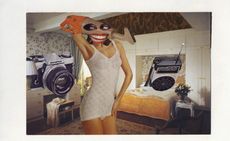 ‘Women in Revolt!’ at Tate Britain is a deliciously angry tour de force of feminist art
‘Women in Revolt!’ at Tate Britain is a deliciously angry tour de force of feminist art‘Women in Revolt!’ puts feminist art from 1970 – 1990 under the spotlight at Tate Britain
By Hannah Silver Published
-
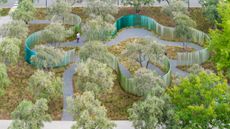 New glass sculpture creates a verdant wonderland at Apple’s Cupertino HQ
New glass sculpture creates a verdant wonderland at Apple’s Cupertino HQ‘Mirage’ at Apple Park is the work of Zeller & Moye and artist Katie Paterson, a shimmering array of glass columns that snakes through the grounds of the company’s monumental HQ
By Jonathan Bell Published
-
 Man Ray’s sculptures go on show in New York
Man Ray’s sculptures go on show in New York‘Man Ray: Other Objects’ opens at Luxembourg + Co, New York, revealing their author’s ‘artistic revolution’
By Hannah Silver Published
-
 The best London art exhibitions to see now
The best London art exhibitions to see nowYour guide to the best London art exhibitions, as chosen by the Wallpaper* arts desk
By Hannah Silver Published